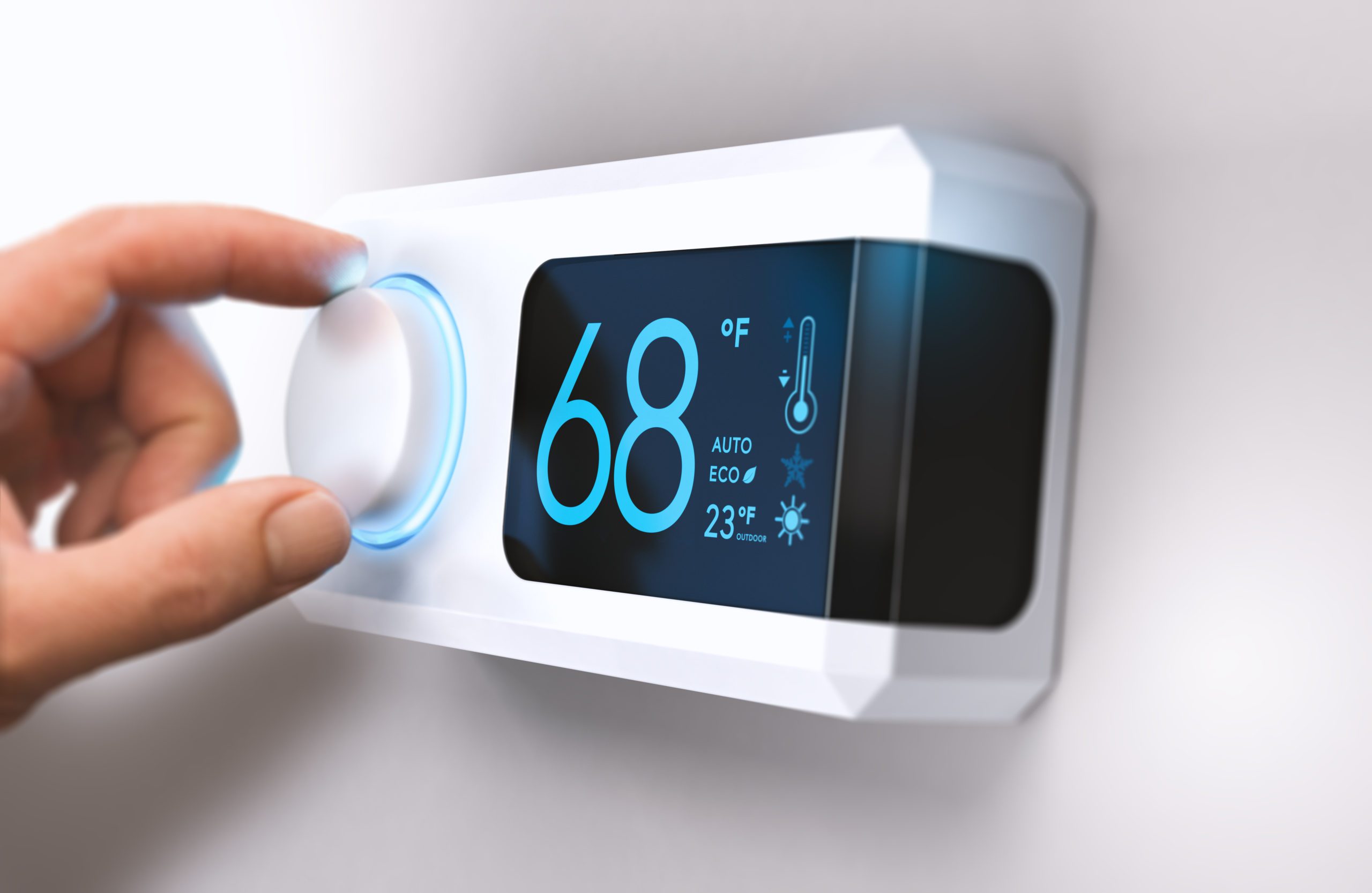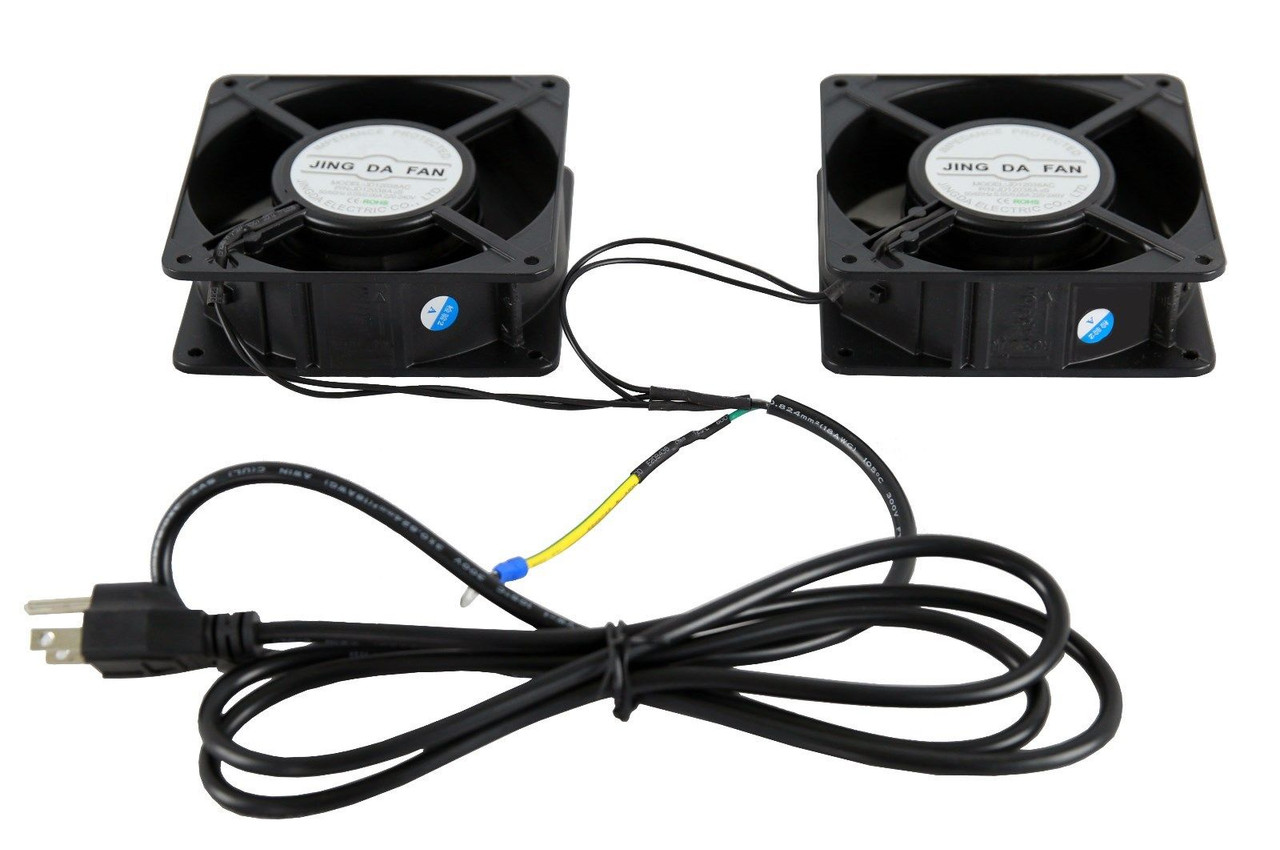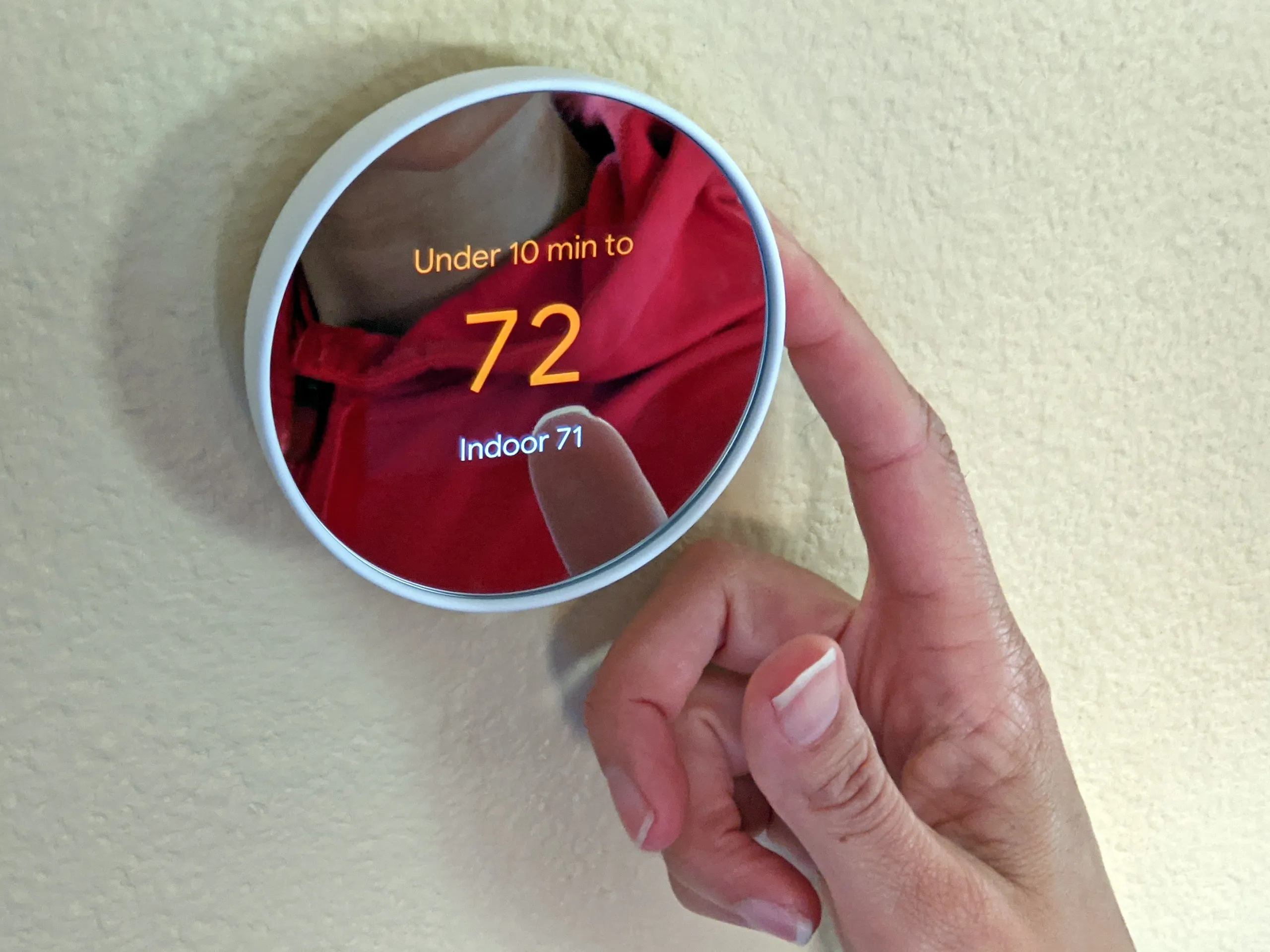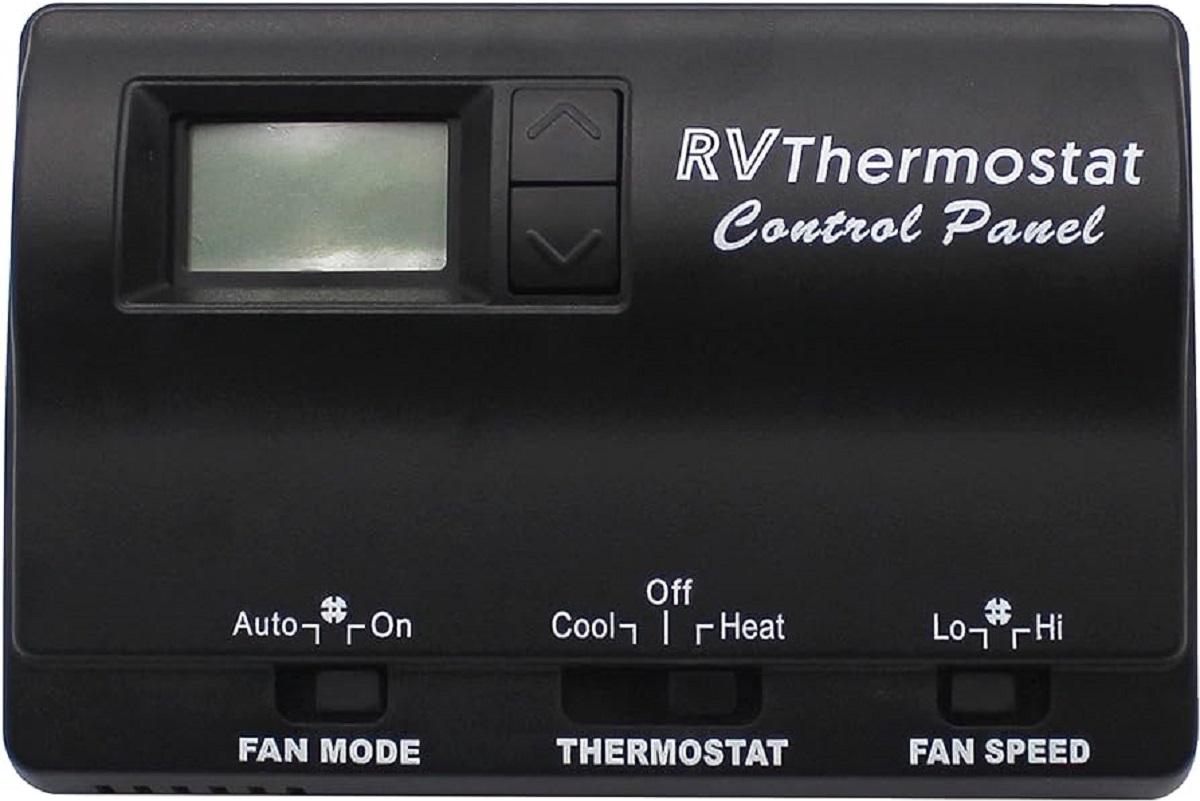Introduction
Welcome to the world of HVAC (Heating, Ventilation, and Air Conditioning), where comfort meets efficiency. When it comes to controlling the temperature in our homes or offices, the unsung hero is often the AC thermostat. The thermostat plays a crucial role in maintaining a comfortable indoor environment by regulating the operation of the air conditioning system. However, like any electronic device, AC thermostats have a finite lifespan and may eventually require replacement.
Understanding how long AC thermostats typically last and the factors that can influence their lifespan can help homeowners and business owners effectively manage their HVAC systems. In this article, we will explore various factors that can affect the lifespan of an AC thermostat, signs that indicate it may be time for a replacement, and how to prolong the lifespan of these essential devices.
It’s important to note that the information provided in this article is intended as a general guideline. Different thermostats have different design considerations and components, which can affect their longevity. It is always advisable to consult the manufacturer’s guidelines or seek professional advice when considering thermostat replacement.
Factors that affect the lifespan of an AC thermostat
Several factors can influence the lifespan of an AC thermostat. Understanding these factors can help homeowners and business owners make informed decisions about their HVAC systems. Let’s take a closer look at some of the key factors:
- Quality of the thermostat: The quality of the thermostat itself is one of the primary factors that can affect its lifespan. Higher-quality thermostats are often designed and built to withstand more durable components and materials, which can result in a longer lifespan.
- Usage and settings: The frequency and settings at which the thermostat is used can impact its lifespan. Constantly adjusting the temperature or frequently switching between heating and cooling modes can put additional strain on the unit, potentially shortening its lifespan.
- Power surges and electrical issues: Power surges and electrical issues can cause damage to the thermostat’s internal components. It is essential to ensure that the thermostat is properly protected against electrical surges and that the electrical system in the building is in good condition.
- Environmental factors: The environment in which the thermostat is located can also play a role in its longevity. Excessive heat, extreme cold, high humidity, or exposure to direct sunlight can all contribute to wear and tear on the thermostat over time.
- Regular maintenance: Like any mechanical device, regular maintenance can help prolong the lifespan of an AC thermostat. Keeping the thermostat clean, ensuring proper wiring connections, and replacing batteries if applicable are all important maintenance tasks.
It’s worth noting that while these factors can influence the lifespan of an AC thermostat, there is no set expiration date for all thermostats. Some thermostats may last several years, while others may need replacement after a shorter period. Monitoring the performance of the thermostat and addressing any signs of malfunction or deterioration in a timely manner can help ensure optimal performance and longevity.
The average lifespan of an AC thermostat
While the average lifespan of an AC thermostat can vary depending on various factors, it is generally expected that a well-maintained thermostat can last anywhere from 10 to 20 years. However, this estimate is not set in stone and can be influenced by several factors.
The quality and brand of the thermostat can have a significant impact on its lifespan. Higher-quality thermostats from reputable manufacturers tend to have a longer lifespan due to their superior workmanship and use of durable components. Cheaper, lower-quality thermostats may not last as long and may require replacement sooner.
Another factor that can affect the lifespan of an AC thermostat is how well it is maintained. Regular maintenance tasks such as keeping the thermostat clean, ensuring proper wiring connections, and replacing batteries (if applicable) can help prolong its lifespan. Neglecting maintenance can lead to premature failure and the need for replacement.
Environmental factors also play a role in the lifespan of an AC thermostat. Extreme temperatures, high humidity, and exposure to direct sunlight can all cause wear and tear on the thermostat, potentially shortening its lifespan. It is important to install the thermostat in an area where it is protected from these environmental factors as much as possible.
Additionally, usage patterns can impact the lifespan of an AC thermostat. Constantly adjusting the temperature, frequently switching between heating and cooling modes, or using the thermostat in an excessively demanding manner can put additional strain on the device, potentially reducing its lifespan.
It is important to note that while 10 to 20 years is a common lifespan estimate, some thermostats may last longer, while others may require replacement sooner. Monitoring the performance of the thermostat and addressing any signs of malfunction or deterioration can help prolong its lifespan and ensure optimal functionality for as long as possible.
Ultimately, regular maintenance, proper usage, and investing in a quality thermostat can contribute to extending the lifespan of an AC thermostat.
Signs that indicate a thermostat needs to be replaced
Over time, wear and tear, as well as technological advancements, can render a thermostat ineffective or obsolete. It is important to be aware of the signs that indicate a thermostat may need to be replaced. Here are some common indications that it may be time for a thermostat upgrade:
- Inconsistent temperature control: If you notice that your thermostat is not accurately controlling the temperature in your home or office, it may be time for a replacement. Uneven heating or cooling can be a sign of a malfunctioning thermostat.
- Frequent temperature fluctuations: Does the temperature in your space frequently fluctuate, even when the thermostat settings remain consistent? If so, this could be an indication of a faulty thermostat that needs replacing.
- Unresponsive controls: If you find that your thermostat is unresponsive or doesn’t react when you try to adjust the temperature or switch between heating and cooling modes, it may be time to invest in a new thermostat.
- Dated technology: If your thermostat is outdated and lacks features such as programmability, Wi-Fi connectivity, or other advanced settings, it may be worth considering an upgrade to a modern, more efficient thermostat.
- High energy bills: If your energy bills have been steadily increasing without any apparent explanation, a malfunctioning thermostat could be to blame. Inefficient or inaccurate temperature control can result in excessive energy usage.
- Aging thermostat: If your thermostat has been in use for more than 10-15 years, it is possible that it is nearing the end of its lifespan. Upgrading to a new thermostat can ensure more reliable and accurate temperature control.
If you are experiencing any of these signs or have concerns about the performance of your thermostat, it is advisable to consult with a professional HVAC technician. They can assess the situation and provide recommendations on whether a thermostat replacement is necessary.
Remember, a properly functioning thermostat is essential for maintaining a comfortable indoor environment and maximizing energy efficiency. Investing in a new thermostat can help ensure optimal temperature control and potentially save you money on your energy bills.
How to prolong the lifespan of an AC thermostat
While the lifespan of an AC thermostat can be influenced by various factors, there are steps you can take to help prolong its longevity and ensure optimal performance. Here are some tips to help extend the lifespan of your AC thermostat:
- Regular maintenance: Perform regular maintenance tasks such as cleaning the thermostat, inspecting and tightening wiring connections, and replacing batteries (if applicable). Maintaining a clean and properly functioning thermostat can help prevent issues that may lead to premature failure.
- Protect from power surges: Install surge protectors or use whole-house surge protection to safeguard your thermostat from power surges. Power surges can damage internal components and shorten the lifespan of the thermostat.
- Install in a suitable location: Choose an ideal location for the thermostat where it is not exposed to direct sunlight, extreme temperatures, or high humidity. This can help reduce the wear and tear on the thermostat and prolong its lifespan.
- Use programmable features wisely: If your thermostat has programmable features, use them wisely to avoid excessive temperature fluctuations and frequent adjustments. Constantly changing the temperature settings can put additional strain on the thermostat.
- Keep vents and air filters clean: Ensure that vents and air filters are regularly cleaned and maintained to promote proper airflow. Restricted airflow can cause the thermostat to work harder and potentially lead to premature failure.
- Address issues promptly: If you notice any signs of malfunction or unusual behavior from your thermostat, address them promptly. Ignoring problems can lead to further damage and shorten the lifespan of the thermostat.
Implementing these steps can help prolong the lifespan of your AC thermostat and ensure it operates efficiently for years to come. It is also important to follow any additional maintenance recommendations provided by the thermostat manufacturer to optimize its performance.
Remember, a well-maintained and functioning thermostat plays a crucial role in maintaining a comfortable and energy-efficient indoor environment. By taking care of your thermostat, you can enjoy reliable temperature control and potentially save on energy costs.
Benefits of replacing an old thermostat
Replacing an old thermostat with a newer, more advanced model can offer several benefits for homeowners and business owners. While the decision to replace a thermostat should consider factors such as budget and specific needs, here are some advantages of upgrading to a new thermostat:
- Improved energy efficiency: Modern thermostats come equipped with advanced features such as programmability, energy-saving modes, and smart technology integration. These features allow for more precise temperature control and the ability to optimize energy usage, potentially resulting in lower energy bills.
- Enhanced comfort: Newer thermostats offer improved accuracy and responsiveness, ensuring that your space is consistently at the desired temperature. Some models even have features like zone control, allowing you to customize temperatures in different areas of your home or office, maximizing comfort.
- Convenient automation: Many newer thermostats offer automation features that can simplify your life. From presetting schedules to Wi-Fi connectivity, these features allow you to control and monitor your thermostat remotely, making it easier to manage your heating and cooling needs.
- Compatibility with modern HVAC systems: If you have recently upgraded or plan to upgrade your HVAC system, it is essential to ensure that your thermostat is compatible. Upgrading to a new thermostat can ensure compatibility with the latest HVAC technologies, maximizing the performance and efficiency of your system.
- Access to advanced features: Newer thermostats often come with a wide range of features, such as touchscreen displays, voice control capabilities, and integration with smart home systems. These features not only provide convenience but also allow for more intuitive and seamless control of your HVAC system.
- Improved aesthetics: If your old thermostat is outdated or visually unappealing, upgrading to a newer model can enhance the overall aesthetics of your space. Many modern thermostats feature sleek designs and stylish finishes that can complement any décor.
Ultimately, replacing an old thermostat can offer improved energy efficiency, enhanced comfort, automation convenience, compatibility with modern HVAC systems, access to advanced features, and an upgraded visual appearance. It is important to consider your specific needs and budget when deciding whether to replace your thermostat. Consulting with an HVAC professional can help you choose the right thermostat for your home or office and ensure a smooth installation process.
Conclusion
The AC thermostat may be a small component in our HVAC systems, but it plays a vital role in maintaining a comfortable indoor environment. Understanding the lifespan of an AC thermostat and the factors that can affect it is essential for homeowners and business owners who want to ensure optimal performance and energy efficiency.
In this article, we explored various factors that can influence the lifespan of an AC thermostat, such as the quality of the thermostat, usage patterns, power surges, environmental factors, and regular maintenance. By being aware of these factors, individuals can take proactive steps to extend the lifespan of their thermostats.
Additionally, we discussed some common signs that indicate a thermostat may need to be replaced, including inconsistent temperature control, frequent temperature fluctuations, unresponsive controls, outdated technology, high energy bills, and outdated thermostats. Recognizing these signs can help individuals make informed decisions about when it is time for a thermostat upgrade.
Furthermore, we provided tips on how to prolong the lifespan of an AC thermostat, including regular maintenance, protection from power surges, installation in a suitable location, responsible usage of programmable features, and keeping vents and air filters clean. By following these tips, individuals can maximize the longevity and performance of their thermostats.
Lastly, we discussed the benefits of replacing an old thermostat, such as improved energy efficiency, enhanced comfort, convenient automation, compatibility with modern HVAC systems, access to advanced features, and an upgraded aesthetic appearance. Upgrading to a newer, more advanced thermostat can offer numerous advantages for individuals looking to optimize their HVAC systems.
In conclusion, understanding the lifespan of an AC thermostat, recognizing signs of replacement, and following proper maintenance practices can help individuals maintain a comfortable indoor environment, maximize energy efficiency, and prolong the lifespan of their thermostats. By considering the benefits of upgrading to a new thermostat, individuals can make an informed decision that aligns with their needs, budget, and desire for improved comfort and efficiency in their homes or offices.

























